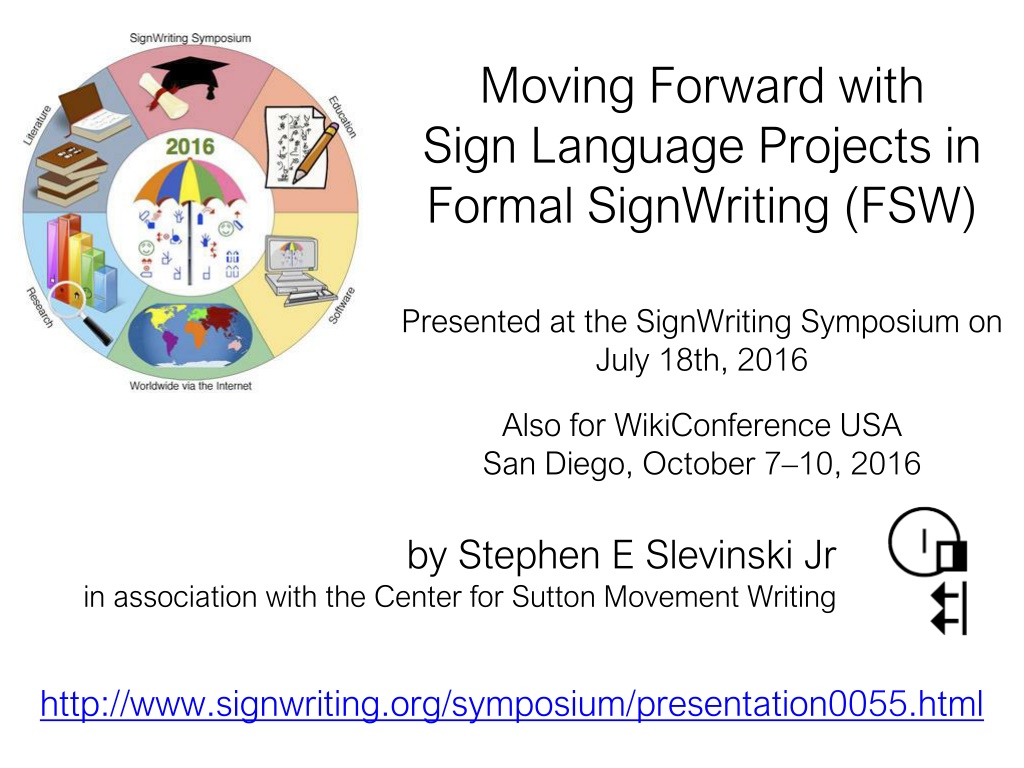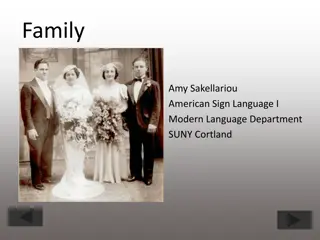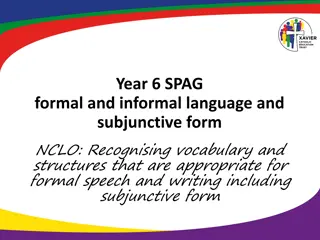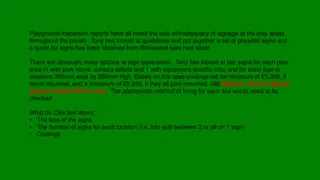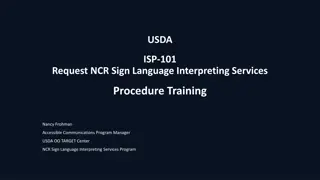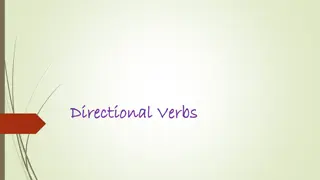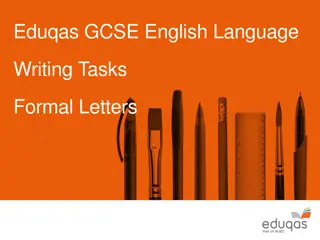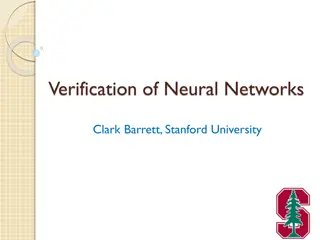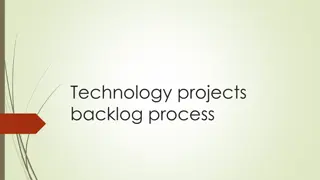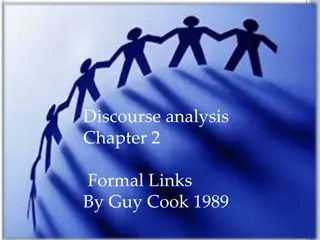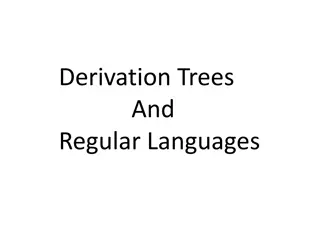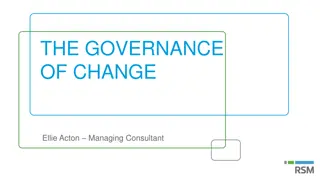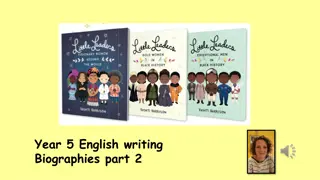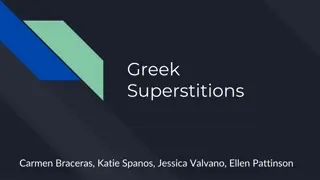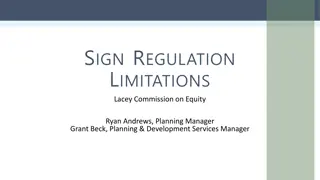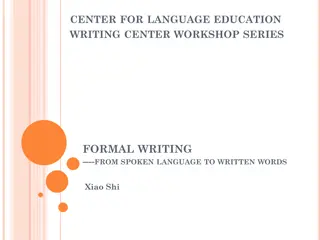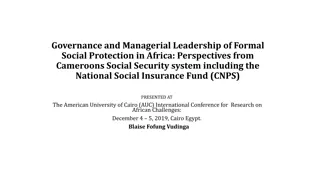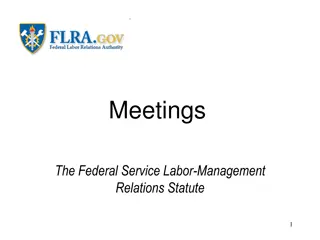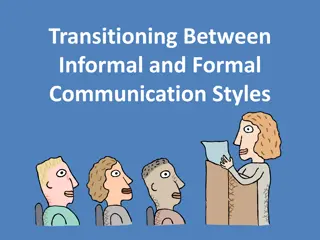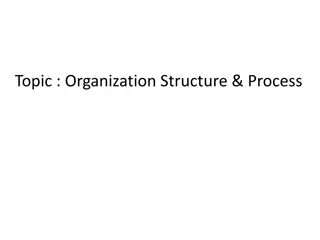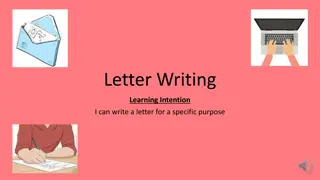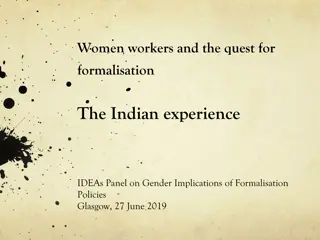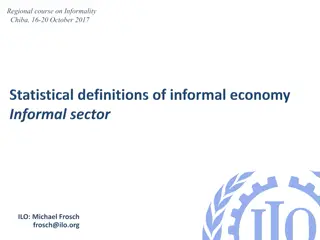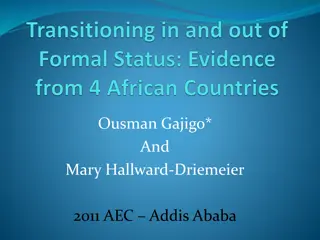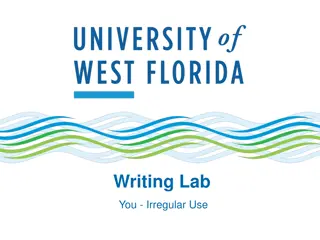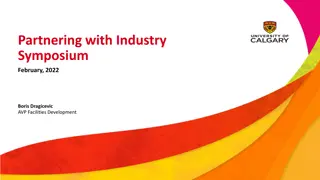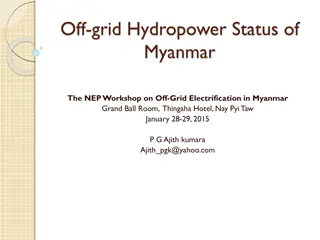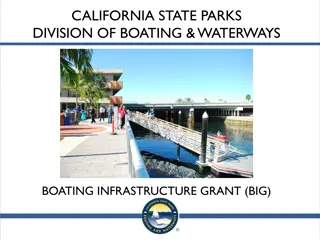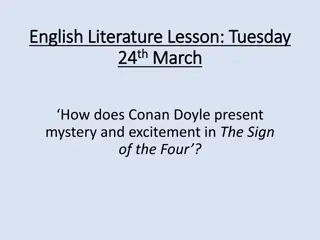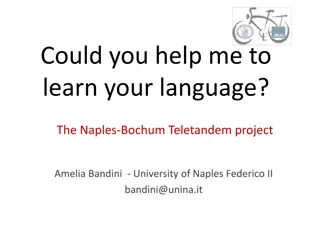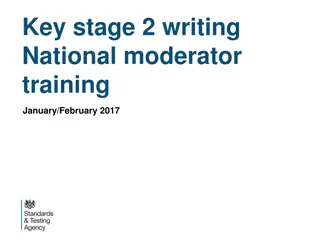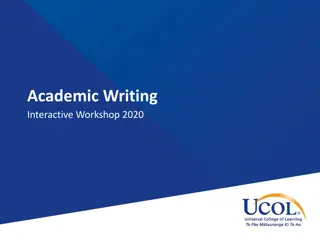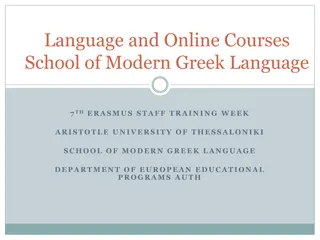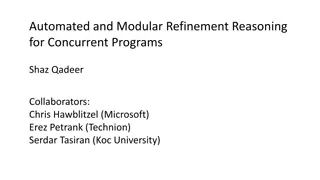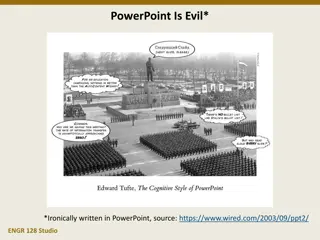Exploring Formal SignWriting in Sign Language Projects
Delve into the world of Formal SignWriting (FSW) as presented at the SignWriting Symposium in 2016 by Stephen E. Slevinski Jr. Discover how FSW, supported by the Center for Sutton Movement Writing, offers a formal language system for sign languages with stable standards and diverse implementations. Learn about the Big Umbrella of sign languages and the unique features of FSW such as its script encoding and visual symbols. Explore the conventions of Block Printing in FSW for education and publishing, contrasted with the freeform construction of signs for unlimited creativity. Uncover the historical backdrop of movable type printing press in Chinese culture and its influence on formal order in writing.
Download Presentation

Please find below an Image/Link to download the presentation.
The content on the website is provided AS IS for your information and personal use only. It may not be sold, licensed, or shared on other websites without obtaining consent from the author. Download presentation by click this link. If you encounter any issues during the download, it is possible that the publisher has removed the file from their server.
E N D
Presentation Transcript
Moving Forward with Sign Language Projects in Formal SignWriting (FSW) Presented at the SignWriting Symposium on July 18th, 2016 Also for WikiConference USA San Diego, October 7 10, 2016 by Stephen E Slevinski Jr in association with the Center for Sutton Movement Writing http://www.signwriting.org/symposium/presentation0055.html
The Big Umbrella of the Center for Sutton Movement Writing All sign languages supported right now. Various hand writing styles. 4+ years of stable and free standards. Many implementations from separate groups. Formal SignWriting (FSW) standard
Formal SignWriting is https://www.youtube.com/watch?v=Gg5oKIpArmE
Formal SignWriting FSW is a formal language based on a script encoding AS18711S20500M514x517S18711490x483S20500486x506 Time Space AS18711S20500 M514x517S18711490x483S20500486x506 A S18711 S20500 M514x517 S18711490x483 S20500486x506 M 514x517 S18711 490x483 S20500 486x506 (514,517) (490,483) (486,506) Sequence Marker Symbol Middle Lane SignBox Max Coord Spatial Symbol
Formal Conventions Valerie Sutton created a collection of visually iconic symbols that exists in a layered hierarchy The exact form of each symbol is structured, standardized, and highly featural. This formal writing is called Block Printing. It is used in education, publishing, and is the basis of the computerized model. By contrast, handwriting can be used informally with fewer features and less detail. However, this can create notes that are sketchy compared to the clarity of formal Block Printing.
Freeform Construction SignWriting is an unconventional script because it is not written sequentially. Rather than a string of letters, each sign is written as a 2-dimensional cluster of symbols. The freeform construction of the signs does not impose any rules or restrictions on the writer. Because of this, any sign of any sign language can be written without limitation.
Formal Order The 11th Century Song Chinese developed the movable type printing press. Each piece of type contained a single character mostly equivalent to a word. Great block houses developed with hundreds of thousand of type pieces each. However, the Chinese logographic system is open-ended. New words require new type. Each house created their own specialized logograms. Organizing the numerous type pieces became a problem. It was easy to understand how to organize the basic type, but new logograms didn t have a definite place within the established order. The practice developed to attach slips of paper to unusual logograms with a sequential list of more standard writing. This way, each piece of type was easy to organize and it was possible to learn the ordering for the new logograms.
Formal Order SignWriting has developed a similar mechanism. Since we can not use a 2- dimensional sign definition for sorting, we create a separate list of order symbols. The ordering of the symbols is subjective and based on a particular theory of sorting. The most productive is Valerie Sutton s theory of the SignSpelling Sequence.
Formal Language According to Wikipedia, "In mathematics, computer science, and linguistics, a formal language is a set of strings of symbols that may be constrained by rules that are specific to it." Sign as Word Mathematical ASCII name Optional time for sorting Mandatory space for visual https://tools.ietf.org/html/draft-slevinski-signwriting-text#section-2
Formal SignWriting and Fonts Render FSW with style, zoom, and reflow https://slevinski.github.io/SignWriting_Character_Viewer/ Version 1: Private Use Area Plane 16 SignWriting 2010 Fonts Version 2: Proposed Unicode 10 Plane 4 Sutton SignWriting Fonts Sutton SignWriting rendered from Formal SignWriting with 2 KB each of HTML, CSS and JS http://codepen.io/Slevinski/full/XKRPzm/
Formal SignWriting Individual Sign Copy and Paste Double-Click or Triple-Click an individual signs to select. Use the Alternate-Click on the same sign for a menu to copy. An individual sign may or may not appear selected.
Formal SignWriting Multiple Sign Copy and Paste Using the mouse, click and drag to select several signs. The FSW will be selected, possibly with plane 4 or 16 characters.
Formal SignWriting UTF-8 and Unicode Planes HTML FSW source coordinates Unicode Plane 4 or 16 for S2ff00 http://codepen.io/Slevinski/pen/zqGNqz
2016 Highlight - SignCorpus Formal SignWriting Web Interface Generates flat file data https://bitbucket.org/unipampa/signcorpus A Web Tool for Building Parallel Corpora of Spoken and Sign Languages. http://www.signwriting.org/symposium/presentation0057.html
Imagine Imagine a world in which every sign language user can freely share in the sum of all knowledge.
Innovation Adoption The international SignWriting community is working towards a future of written sign language for education and literature and more. In Brazil, the early majority of Deaf embrace literacy. Many can quickly write Sutton SignWriting by hand. https://www.facebook.com/librasescrita/ 32,523 Total Page Likes
Wikimedia Wikimedia is a global movement whose mission is to bring free educational content to the world. All of these projects can use sign language text encoded in Formal SignWriting. Several projects are underway.
Realize Sign languages are human languages. Any topic that can be discussed in a spoken language can be discussed in a signed language. It's important to realize the benefits of a person being able to access information in their primary language. It's exciting to realize that sign language wikipedia projects are now possible with Sutton SignWriting.
Wikimedia Labs Wikimedia Labs provides server virtualization for community projects. SignWriting has an open-ended project involving several instances and websites. https://wikitech.wikimedia.org/wiki/Nova_Resource:Signwriting http://swis.wmflabs.org/ http://swserver.wmflabs.org/
Progress For the past several years, we have been working on the technical infrastructure to make it possible to have a wikipedia in any sign language. We've been using Translate Wiki to localize the user interface. Most commonly, SignWriting is displayed vertically and for MediaWiki this requires a custom skin with the CSS vertical writing mode enabled. The technical details are complex, and we continue to make progress.
SignWriting Gadget and Keyboard The SignWriting Gadget runs on Incubator and provides the ability to view and edit SignWriting within MediaWiki. http://www.signwriting.org/symposium/presentation0041.html https://incubator.wikimedia.org/wiki/MediaWiki:Gadget-Signwriting.js
Snowball As we've seen with Wikipedia itself, there is a snowball effect with these types of projects. More people getting involved, leads to more people getting involved. One of the major factors holding back the widespread acceptance of SignWriting is having enough reading material available to make it worthwhile to learn SignWriting. The sign language wikipedia projects are important for the growth of SignWriting and the positive effects of the sign language wikipedias will benefit all sign language users far beyond just the particular wikipedia projects themselves.
Wikimedia Incubator Wikimedia Incubator provides a platform for new language projects to grow and develop a community. https://incubator.wikimedia.org/wiki/Wp/ase
Spread the word Sign language wikipedia projects are now possible with Sutton SignWriting. We encourage sign language users to get involved by learning Sutton SignWriting and the MediaWiki software. We encourage technical MediaWiki users of all levels to get involved and help us improve and streamline the technical details. We encourage everyone to imagine a world in which every sign language user can freely share in the sum of all knowledge.
Real World Impact Moving forward with sign language projects under Wikimedia. WikiConference USA October 2016 in San Diego https://meta.wikimedia.org/wiki/WikiConference_USA Formal SignWriting Adoption Unicode Considerations SignWriting Encyclopedia Projects: Wikipedias in American Sign Language and Tunisian Sign Language http://www.signwriting.org/symposium/presentation0064.html
Moving Forward with Sign Language Projects in Formal SignWriting (FSW) by Stephen E Slevinski Jr slevinski@signwriting.org AS20310S26b02S33100M521x547S33100482x483S20310506x500S26b02503x520 http://slevinski.github.io/ http://signpuddle.com
The standards process Specifications Real world usage Implementations A long digression into how standards are made Dive into HTML5 by Mark Pilgrim http://diveintohtml5.info/past.html
The standards process Implementations and specifications have to do a delicate dance together. You don t want implementations to happen before the specification is finished, because people start depending on the details of implementations and that constrains the specification. However, you also don t want the specification to be finished before there are implementations and author experience with those implementations, because you need the feedback. There is unavoidable tension here, but we just have to muddle on through. Mozilla Developer http://lists.w3.org/Archives/Public/public-html/2010Jan/0107.html
